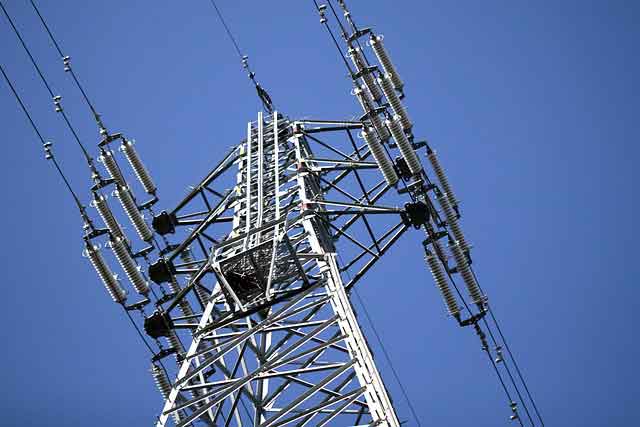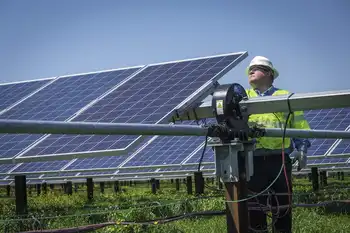Louisiana Energy Users Group files protest with PSC
BATON ROUGE, LOUISIANA - Industrial facilities lining the Mississippi River contend that Entergy Corp. would profit off proposed surcharges to recover losses caused by the hurricanes.
Entergys plan would enrich its shareholders at the expense of its residential, commercial and industrial customers, Louisiana Energy Users Group claimed in a protest filed with the Public Service Commission.
Louisiana Energy Users Group is a coalition of the states 20 largest refineries and manufacturers, including ExxonMobil Corp., BASF Corp., and PPG Industries. They are among Entergys largest electricity customers.
The complex formula Entergy proposes to recoup its expenditures for getting the lights back on after the hurricanes would double some costs for consumers with the excess going to the utilitys shareholders, said Joe Marone of Occidental Energy Ventures Corp in Houston.
If youre going to charge me more than the prevailing rate to borrow money, then how else could you define it but profiteering? said Marone, head of the coalition.
Entergy Vice President T. Michael Twomey, who is in charge of the companys regulatory affairs in Louisiana, said, That is an outrageous remark. Im stunned that at this point they would now seek to prevent the company from recovering the monies it spent to restore power after the storms.
Re-establishing the power after hurricanes Katrina and Rita cost Entergy about $700 million in Louisiana to do tasks such as getting power plants working again and restringing fallen transmission lines.
Utility companies are allowed by law to charge ratepayers for storm damage costs. In past storms, the application to collect the surcharges waited until the utilitys insurance paid up and the federal government kicked in its help. Only then were ratepayers asked to pick up the difference.
Entergy asked the PSC in December for approval to begin collecting the surcharge as soon as possible. Entergy asked the regulatory commissioners to consider the surcharge at their next meeting on Feb. 22.
Each month, the surcharge would cost $2.45 for the typical residential consumer in the Baton Rouge area who uses 1,500 kilowatt hours of electricity, according to Entergys filings. That typical residential customer paid $179.61 last month.
A petrochemical manufacturing facility in the Entergy Gulf States region around Baton Rouge, which uses 100 megawatts of electricity, spends $56 million a year for power, according to the energy coalition.
That typical industrial customer would see a $582,000 increase in its rates.Companies that are served by Entergy Louisiana would pay more.
The band of refineries and manufacturing plants dont begrudge Entergy recouping its losses from the two hurricanes. But Entergy provided no evidence that the company would suffer if it wasnt allowed to collect the surcharge immediately, Marone said.
Its not our position that we dont want to pay. We dont want an unhealthy utility, Marone said. As ratepayers, wed like it done prudently. We dont want to get hammered financially to help out Wall Street.
Twomey said other states have agreed to levying the surcharge before all the receipts are in. For instance, the Florida Public Service Commission allowed Florida Power & Light to collect $1.68 per month and Progress Energy to collect $3.81 per month from residential customers to start repaying losses from four hurricanes in 2004.
The real issue: Is the Louisiana Public Service Commission going to make the company wait one or two years to recover these dollars, Twomey said. The Commission would send a positive signal to the financial community that office in and around Wall Street in New York City, he said.
Entergy borrows money from that community in the form of bonds.
Wall Street analysts rate a corporations bonds based on the economic health and stability of the business. If the ratings services lower the grade on Entergys bonds, the company will have to pay more in interest. Those additional costs would be passed along to Entergys customers in the form of higher rates.
The interim surcharge is designed to keep Entergy on sound financial footing and to minimize the possibility that our debt costs would increase, Twomey said.
Rates, basically, are the utilitys cost of making and transmitting electricity, plus a preset profit for shareholders.
The coalition argues in its protest that Entergy calculated the surcharge to include a full return, which would equal 11.5 percent. The cost of obtaining that same amount of money through loans would equal about 5 percent, Marone said.
When Entergy earns more profit than the state Public Service Commission allows, the company is allowed to keep a portion of that money as an incentive to operate more efficiently.
The coalition also argues that Entergy should use those over- earnings to pay down the storm damages rather than pay Entergys shareholders.
Related News

US Automakers Will Build 30,000 Electric Vehicle Chargers
WASHINGTON - Seven major automakers announced a plan on Wednesday to nearly double the number of fast chargers in the United States in an effort to address one of the main reasons that people hesitate to buy electric cars.
The carmakers — BMW Group, General Motors, Honda, Hyundai, Kia, Mercedes-Benz Group and Stellantis — will initially invest at least $1 billion in a joint venture that will build 30,000 charging ports on major highways and other locations in the United States and Canada.
The United States and Canada have about 36,000 fast chargers — those that can replenish a drained battery in…




